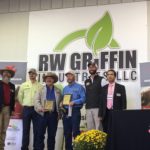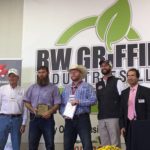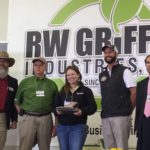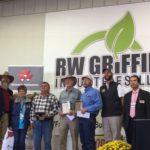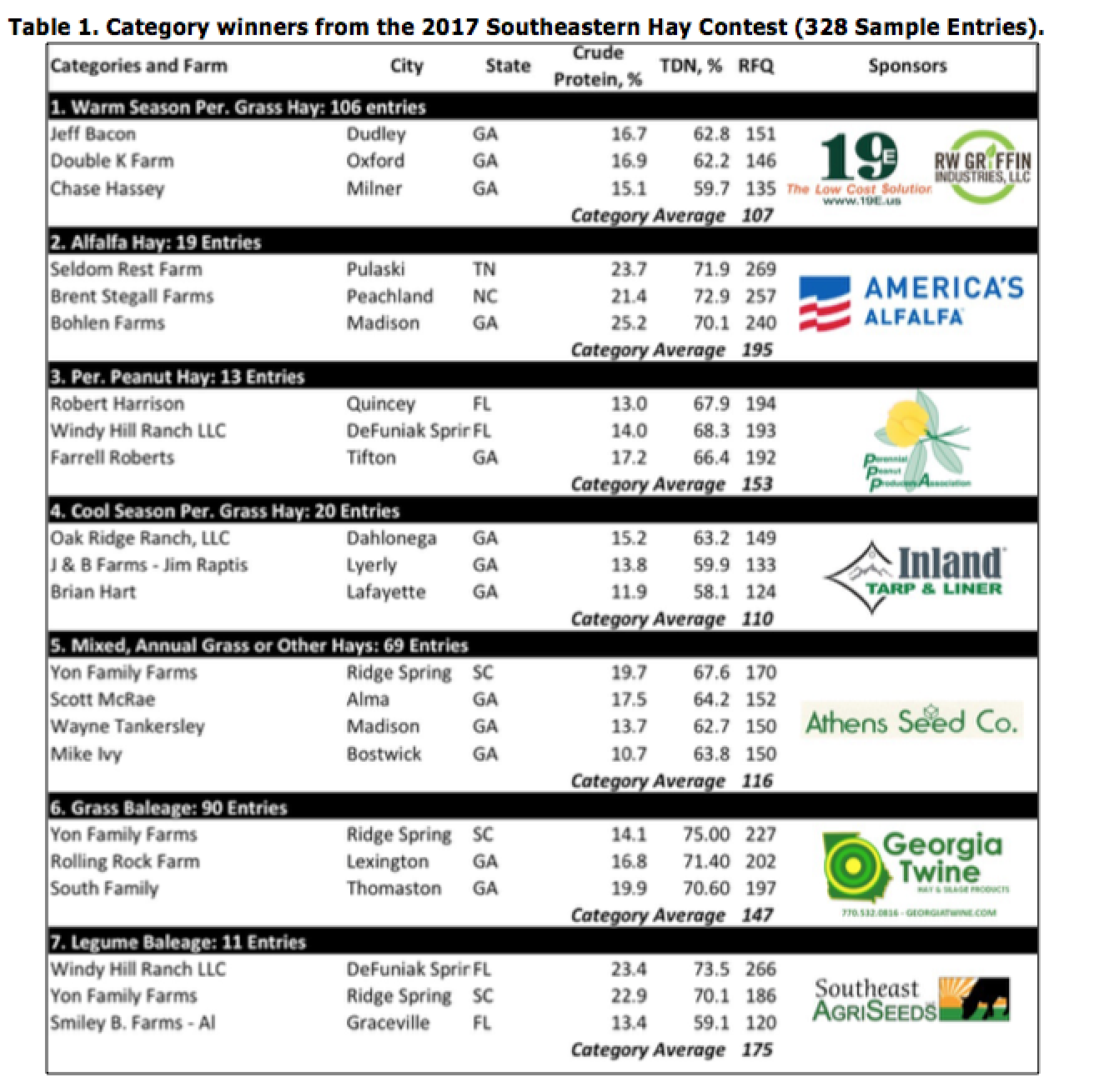Also see: Massey Ferguson’s “A cut above the rest” video series on quality haymaking.
Download this press release as a PDF here.
 2017 – Results
2017 – Results
October 17-19, 2017
Sunbelt Agricultural Exposition, Moultrie Georgia
A Cooperative Extension Effort of Auburn University, Clemson University, The University of Florida, and The University of Georgia
The 2017 Southeastern Hay Contest (SEHC) presented by Massey Ferguson was a fierce competition, with 328 entries vying for the top spot. Final results for the 2017 SEHC are listed in Table 1 (scroll below). The results are broken down into the Contest’s categories of the contest: warm season perennial grass hay (bermudagrass, bahiagrass), alfalfa hay, perennial peanut hay, perennial cool season grass (tall fescue, orchardgrass, etc.) hay, mixed and annual grass hay, grass baleage, and legume baleage. This contest is held in conjunction with the Sunbelt Agricultural Expo in Moultrie, GA. Winners were announced during the opening ceremonies at the Sunbelt Expo on Tuesday, Oct. 17, 2017. In each of the categories, the highest three entries in terms of relative forage quality (RFQ) received cash prizes. First place received $125, second received $75, and the third place entry received $50. Top honors in terms of highest overall RFQ also received their choice of the use of a new Massey Ferguson DM Series disc mower or RK Series rotary rake for the 2017 hay production season plus $1000 in cash! This year, the overall high RFQ was 269, which was from some extremely high quality alfalfa made at Seldom Rest Farm in Pulaski, TN.
Weather is always a major factor when attempting to produce high quality forage. This year, wet conditions early and dry conditions late in the growing season proved to be a major limitation for many producers. Drought stress late in the season increased the incidence of high nitrate levels in the forage in 2017, and 11.5% of the samples submitted to the contest were disqualified because nitrates were greater than 5000 ppm. Though the average forage quality this year was very high, these weather challenges caused the average RFQ to be down slightly from previous years. Still, the winning entries were on par with or greater than record winning values in the Contest’s 13-year history. Good management can make a remarkable improvement in forage quality in both favorable and unfavorable weather conditions.
What is Relative Forage Quality? In the past, hay quality prediction equations were based on the fiber concentration of the hay crop. However, forage crops can have similar fiber content but have very different digestibility. For instance, Tifton 85 bermudagrass often has a higher fiber concentration than other bermudagrass varieties, yet it is more digestible. This improved digestibility results in enhanced animal performance, but is not reflected using traditional forage testing methods. The Relative Forage Quality index was developed by the University of Florida and the University of Wisconsin to predict the fiber digestibility and animal intake of harvested crops. Since 2003, hundreds of warm season samples have been used to refine the RFQ equation for bermudagrass and other warm season forages. Currently, all forage sample results from the UGA’s Feed and Environmental Water Lab in Athens contain an estimate of Relative Forage Quality. This value is a single, easy to interpret number that improves producer understanding of a forage’s nutritive quality and helps in establishing a fair market value for the product.
How can Relative Forage Quality help me? Relative Forage Quality allows hay producers to easily categorize and price hay lots based on relative quality. Producers can purchase hay lots depending on its end use. For example, there is little need to feed high-quality hay to livestock that could easily utilize poorer quality forage. Hay with a RFQ of 100 or more can usually be economically fed to maintain beef cows, while hay with an RFQ of 125-150 is adequate for stocker cattle or young growing replacement heifers, and hay with an RFQ of 140-160 is suitable for dairy cattle in the first three months of lactation. It is also easy to see that Relative Forage Quality could provide the framework for a quality hay marketing system. For example, hay with a RFQ of 155 could conceptually be labeled “premium” hay, while hay with an RFQ of 100 could be labeled “fair”. This simple system could allow producers to price hay consistently and fairly across harvest maturity, fertilization regimes, or plant species (i.e. bermudagrass, bahiagrass, perennial peanut, or tall fescue).


